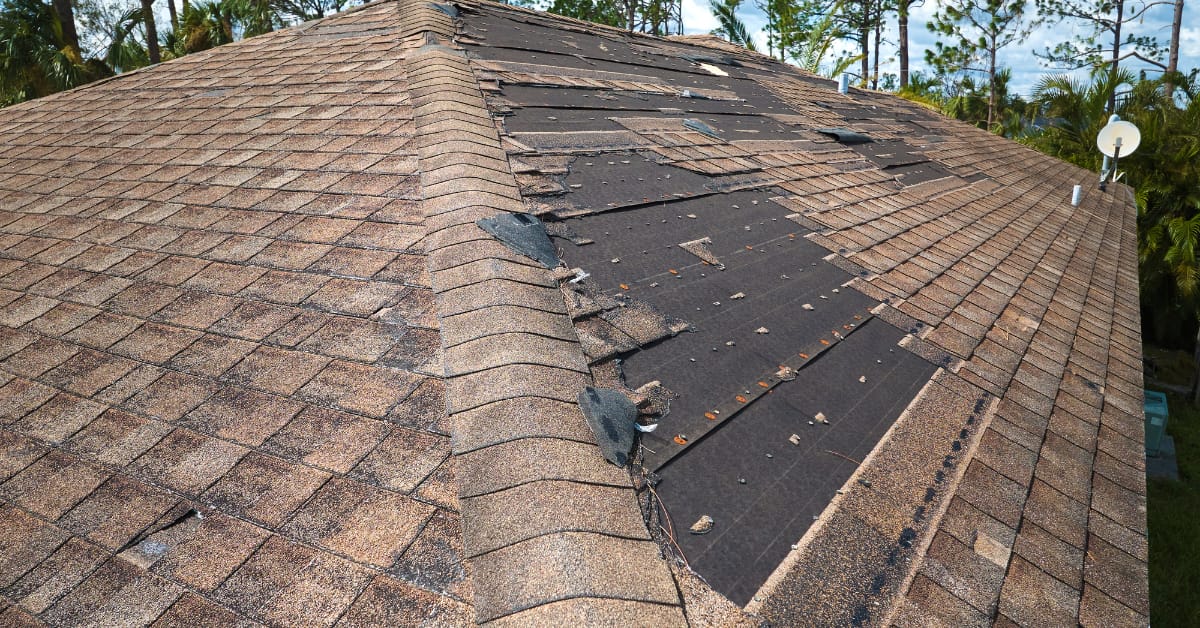-
Strong wind, hail, and rain make Texas storms especially brutal on roofs.
-
After the storm calms, safely document damage, call your insurance company, and call a contractor to handle repairs.
-
More storms are coming. Consider upgrading to more durable roofing materials graded to withstand strong winds, high heat, and heavy hail.
Texas homeowners aren’t strangers to tough weather. But it isn’t always clear what to do after a particularly bad storm. That’s why we’ve created this guide, which will walk you through what you’re up against, what you should document, who you should call, and what you should do about the damage.
Why Texas Storms Are Different
Texas gets plenty of windstorms and tornadoes. Strong winds can peel back shingles and tear at flashing, opening up plenty of leak points. Tornadoes are even worse, capable of taking an entire roof off. And then there’s the hail. Texas gets more hail than any other state, which can puncture shingles, dent metal panels, and crack tile. And even if your roof is only mildly damaged, rain won’t have any trouble finding tough-to-see leak points, causing mold or rot in the underlying structure.
First Priorities After a Storm
Safety comes first. There’s no sense in damaging yourself by trying to look for damage. Don’t climb on your roof, and stay clear of downed wires and loose debris. Instead, walk around the perimeter of your home and see what’s visible. Take photos and videos of any damage. Then, go to the attic and check for visible damage. Document everything you find.
If it’s clear there’s damage, then call your insurance company. We have a guide to the insurance claims process that walks you through every step of this process.
After that, reach out to a local roofing contractor. But be cautious of door-to-door crews who arrive right after a storm. Texas’s underregulated market is known for fraudulent activity. Only hire a crew with a good reputation, proven experience, and great testimonials. Otherwise, you might pay for corner-cutting, cheap materials, and big expenses down the road.
Temporary Protection
So, you’ve documented the damage and you’ve made the calls. But what if roof damage urgently needs to be addressed now? In many cases, a properly secured tarp can hold off water until help arrives. For smaller damage, like leaks in the attic, buckets or temporary sealants can work.
You should keep receipts for any tarps or materials you use, since you may be reimbursed for them later. This also shows your insurer that you did your part to stop even more damage from occurring. Likewise, don’t throw out any damaged items until after your insurance adjuster completes an evaluation of the damage.
Just remember not to climb on the roof without training or safety gear. Nailing through shingles or trying to patch a roof with tape and plastic usually does more harm than good anyway. This is just about using temporary measures to minimize interior damage. A professional crew will handle the rest.
Planning Permanent Repairs
When the time comes for repairs or replacements, consider upgrading to tougher roofing material. A good contractor will be able to explain what kind of materials are rated for the impact and wind resistance best suited for your area. After all, more storms are coming. There will never be a better time to prepare for them than right now.
We’re Here to Help
Need more information? If you have any questions or need assistance with damage, contact DFW Roofers at (469) 751-4018 or schedule an appointment through our online appointment form.


